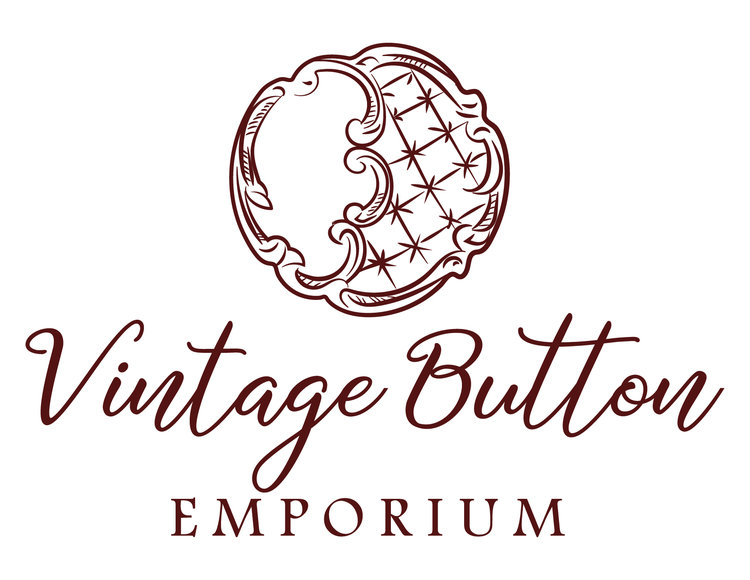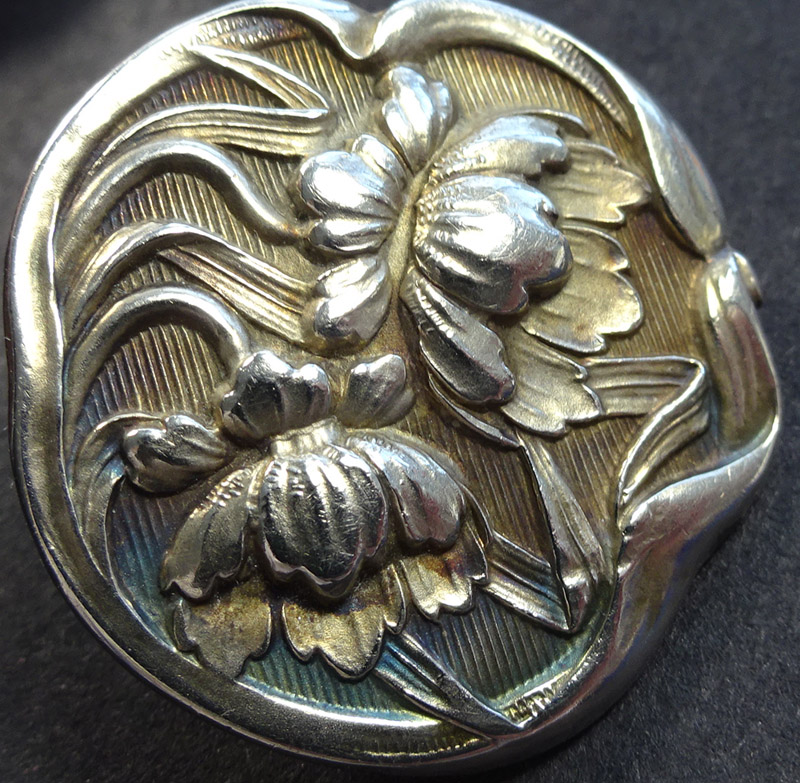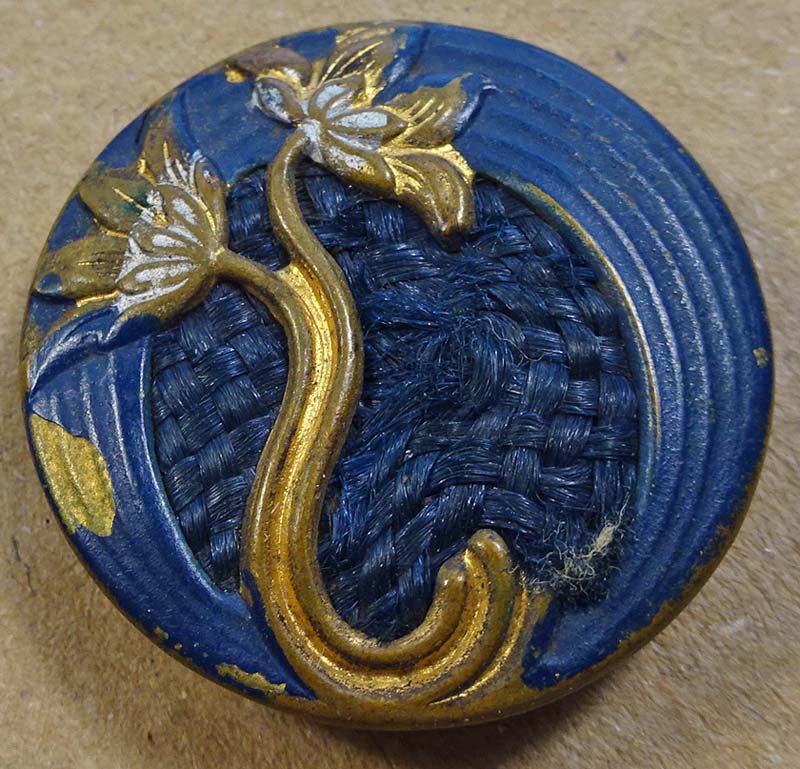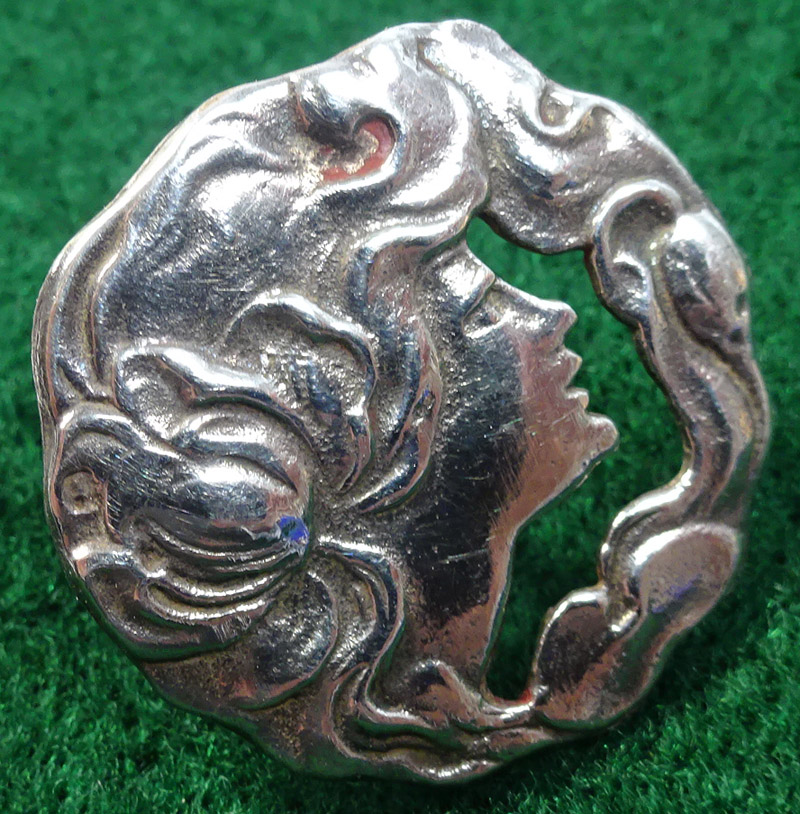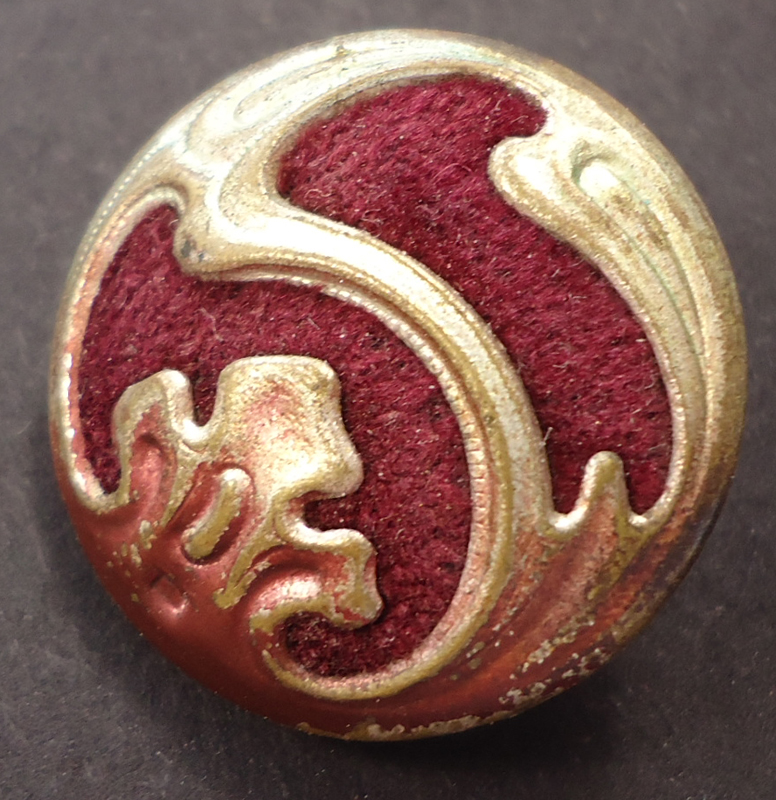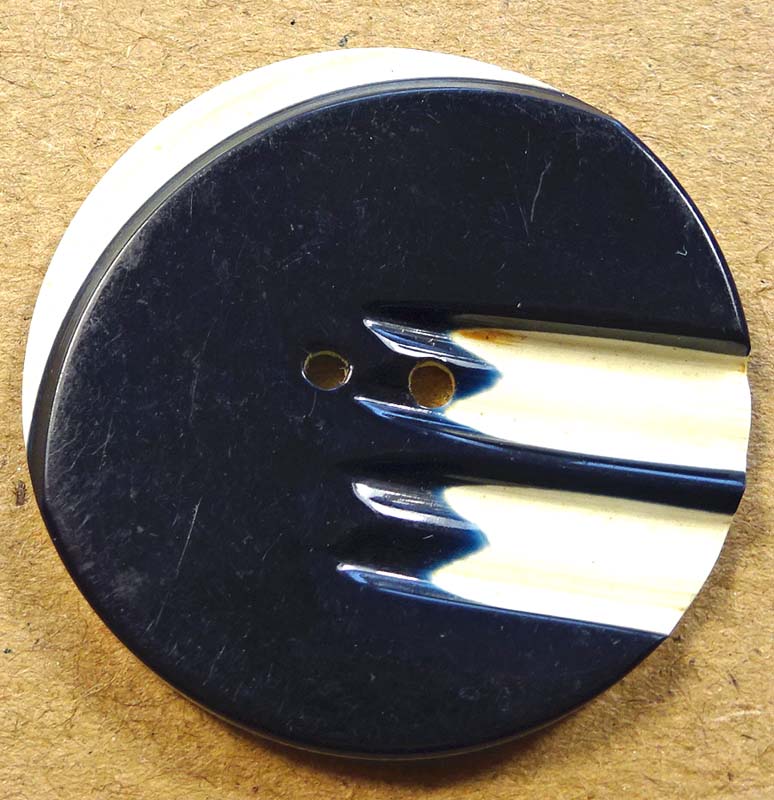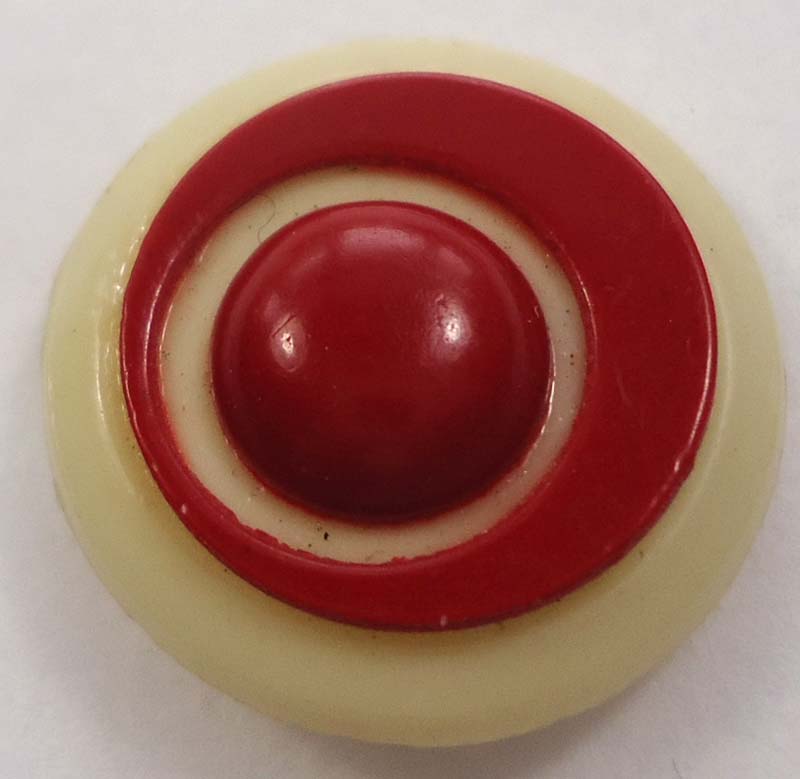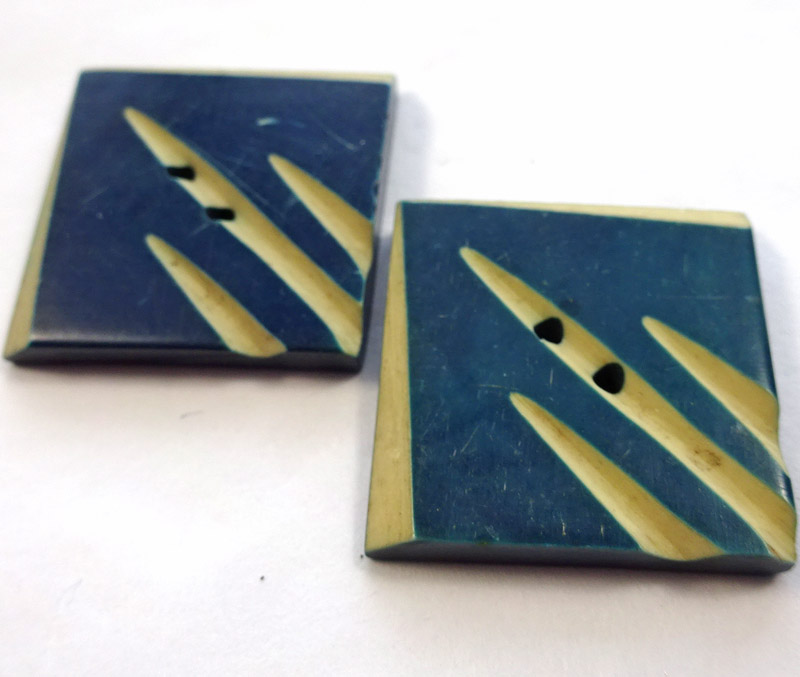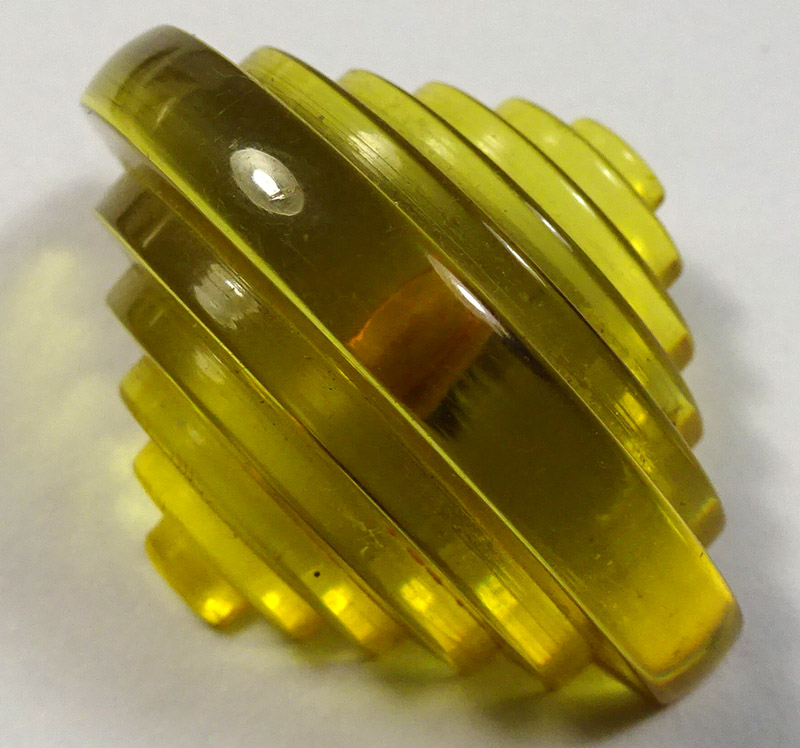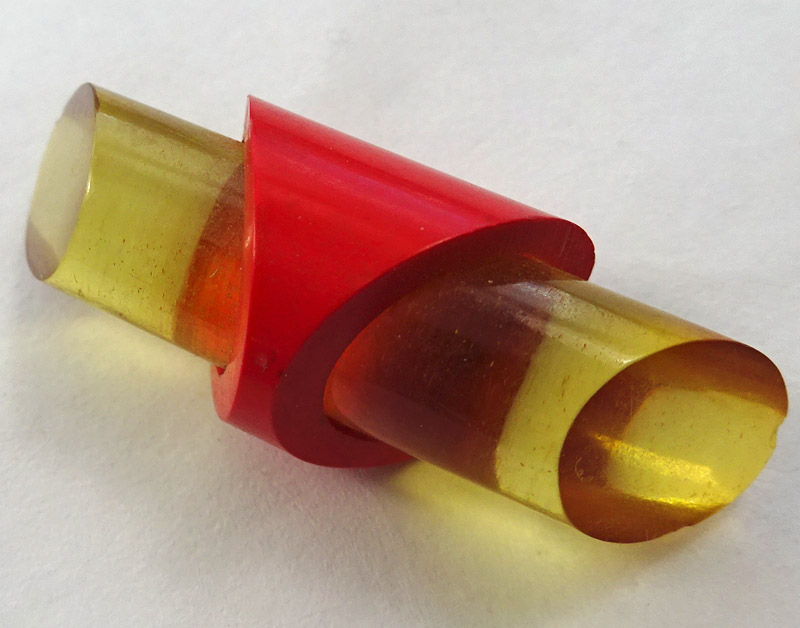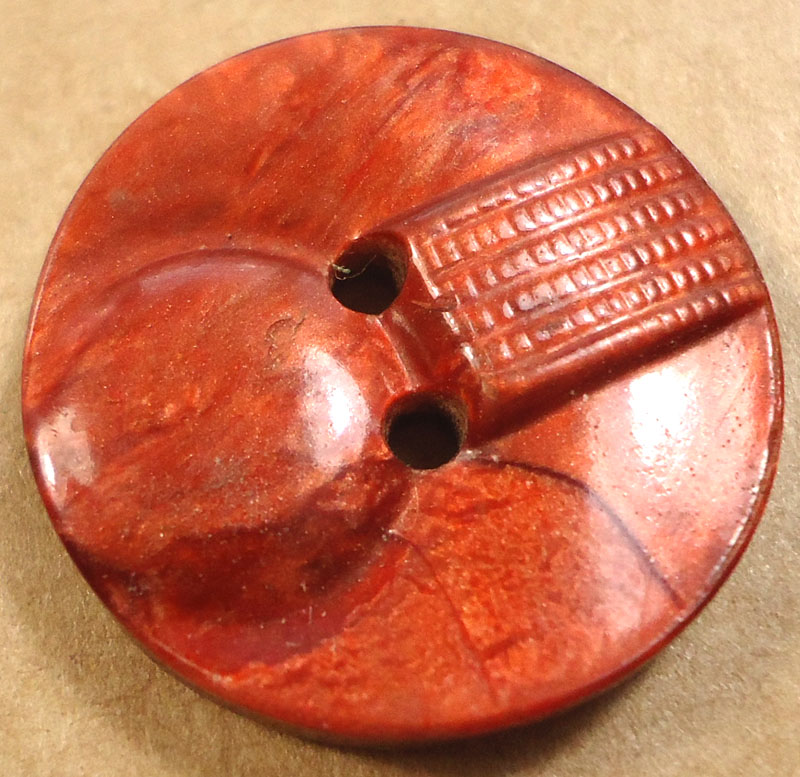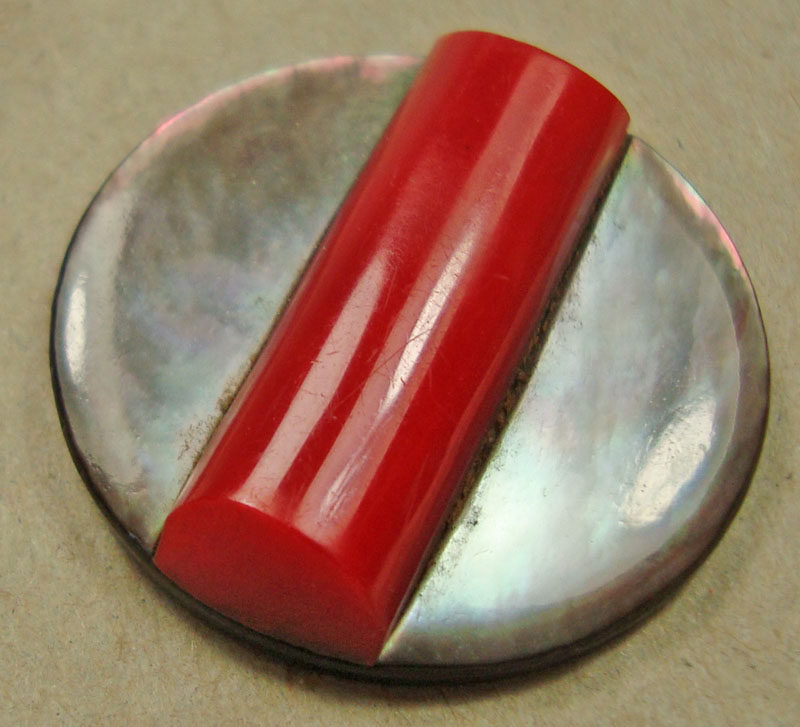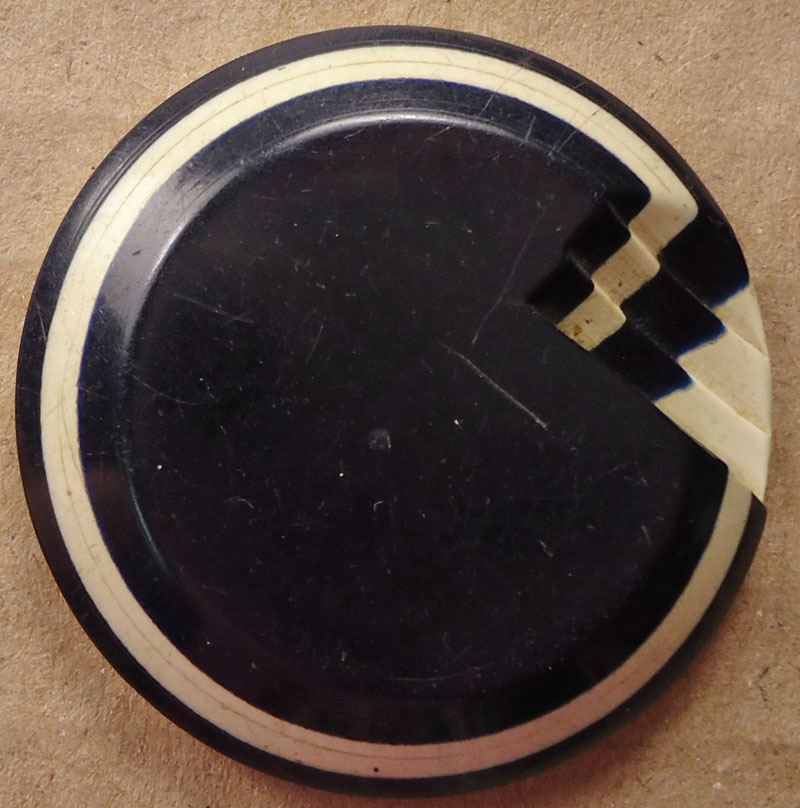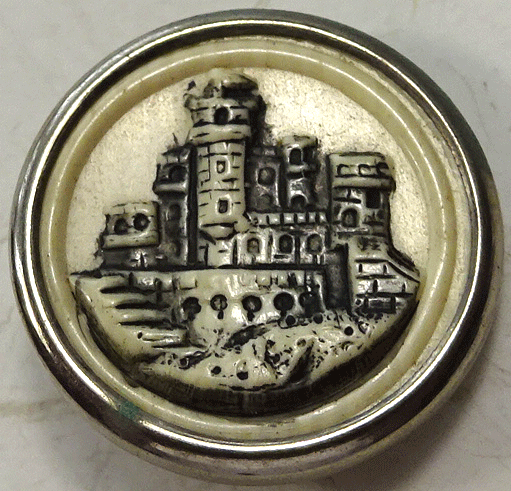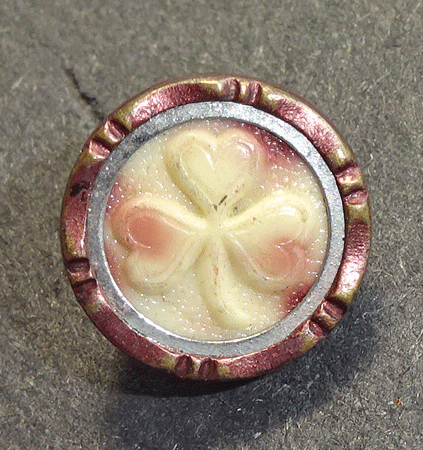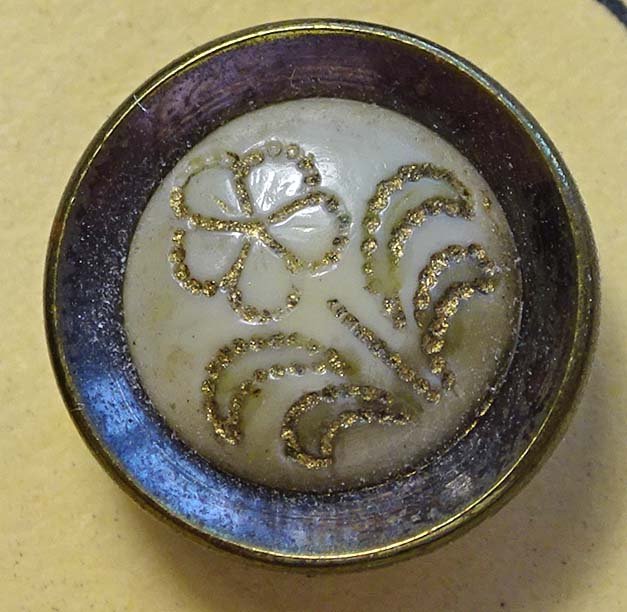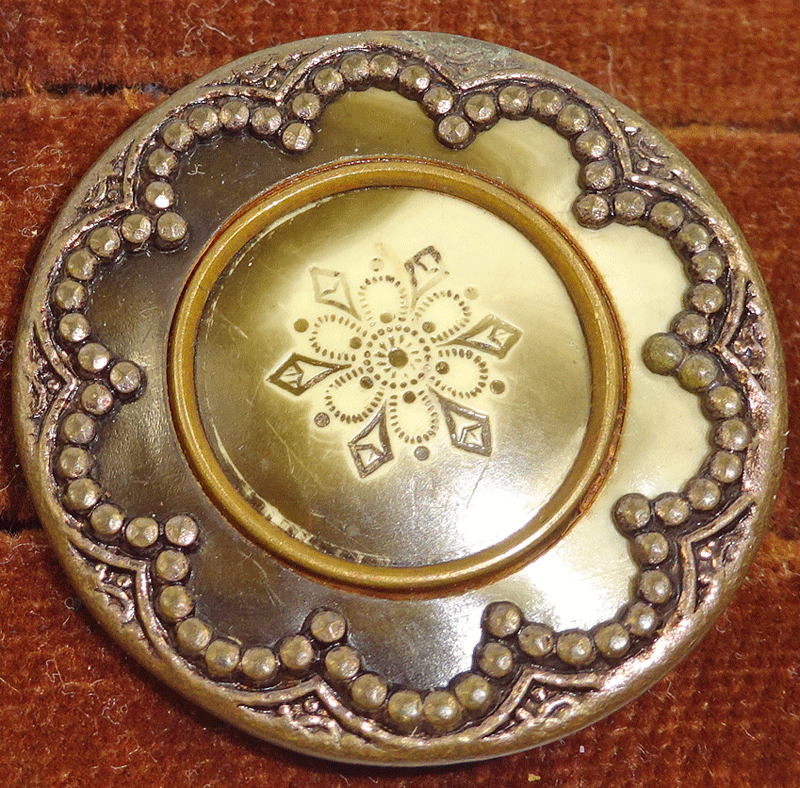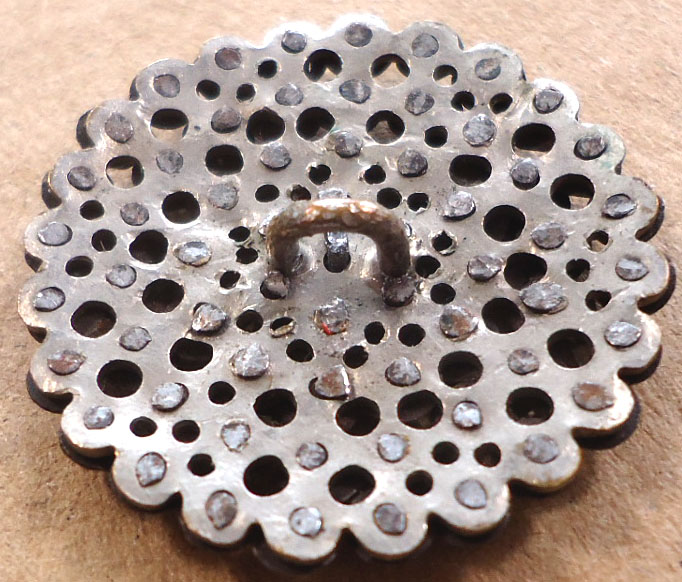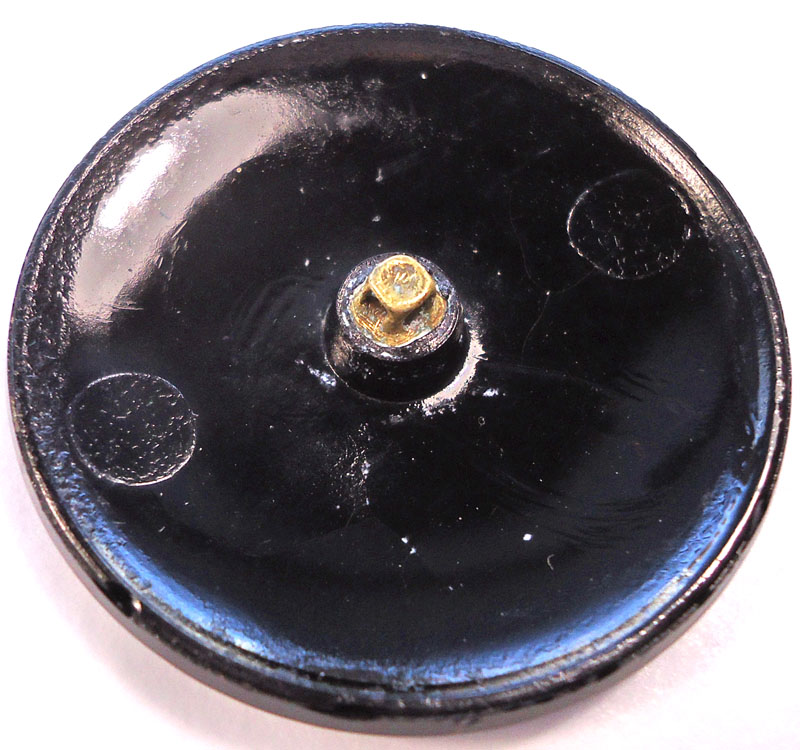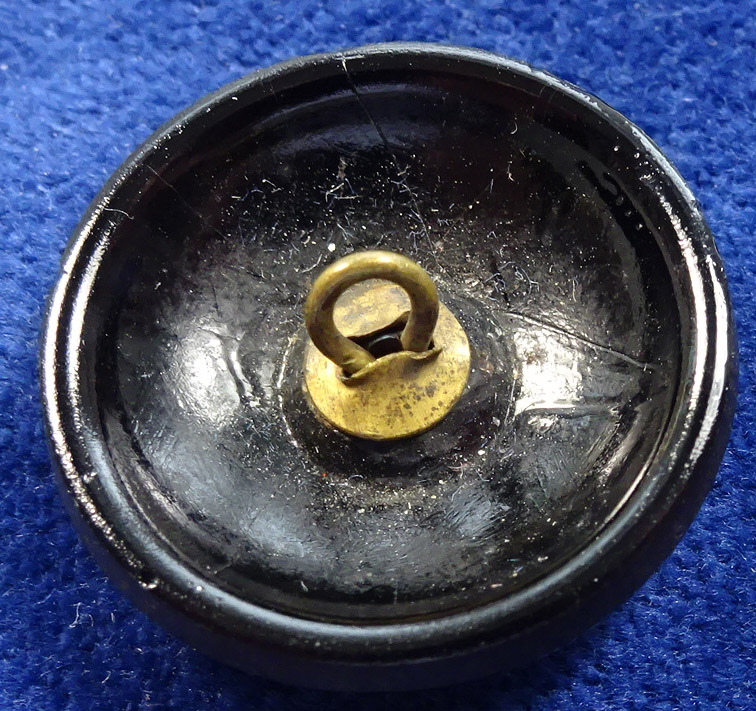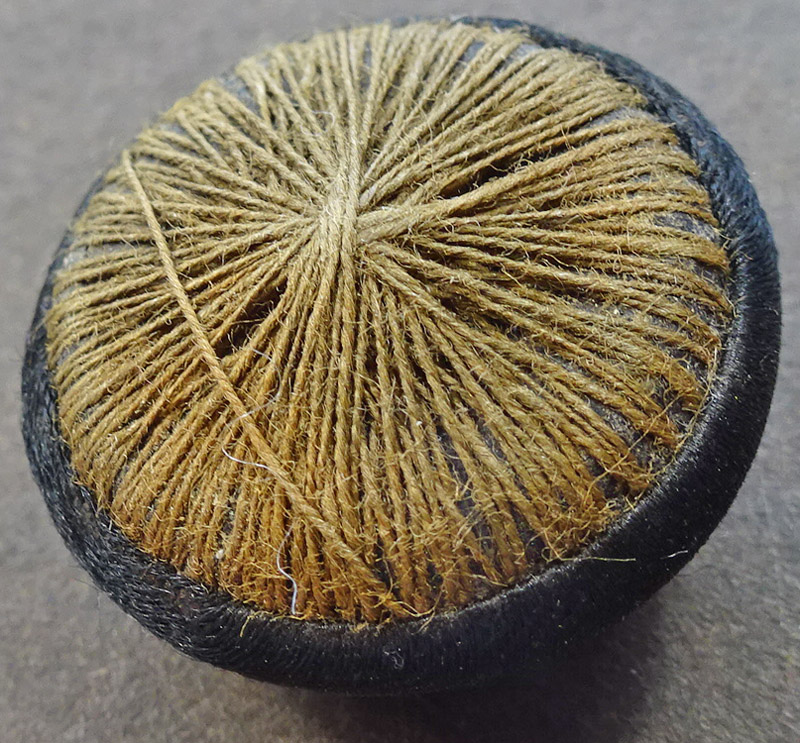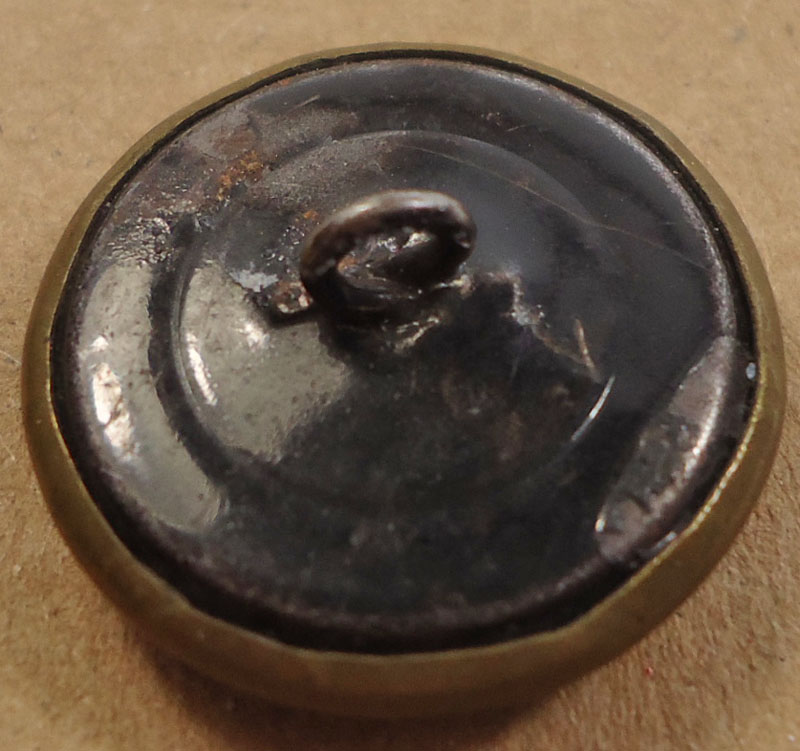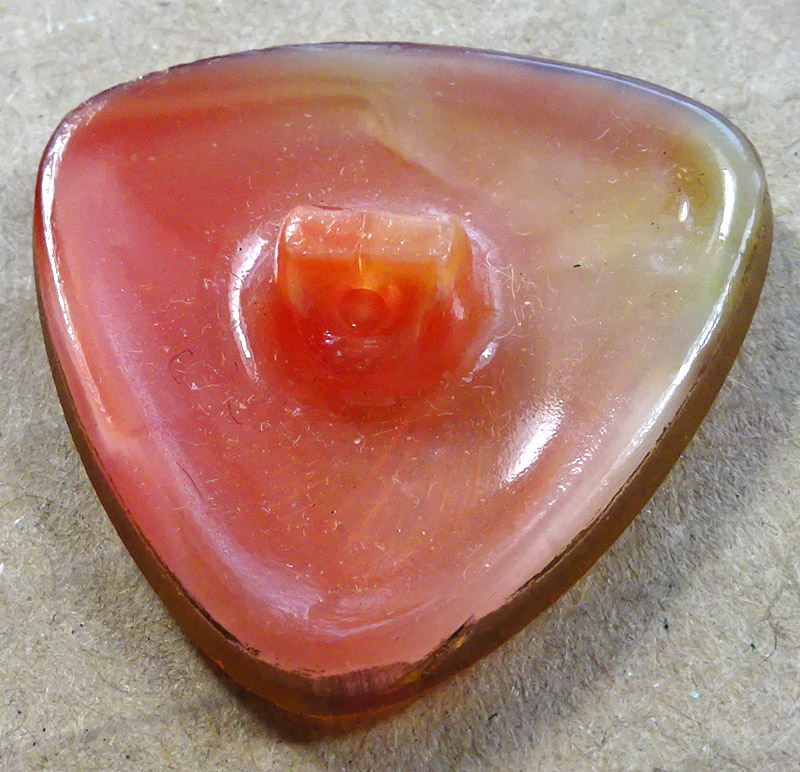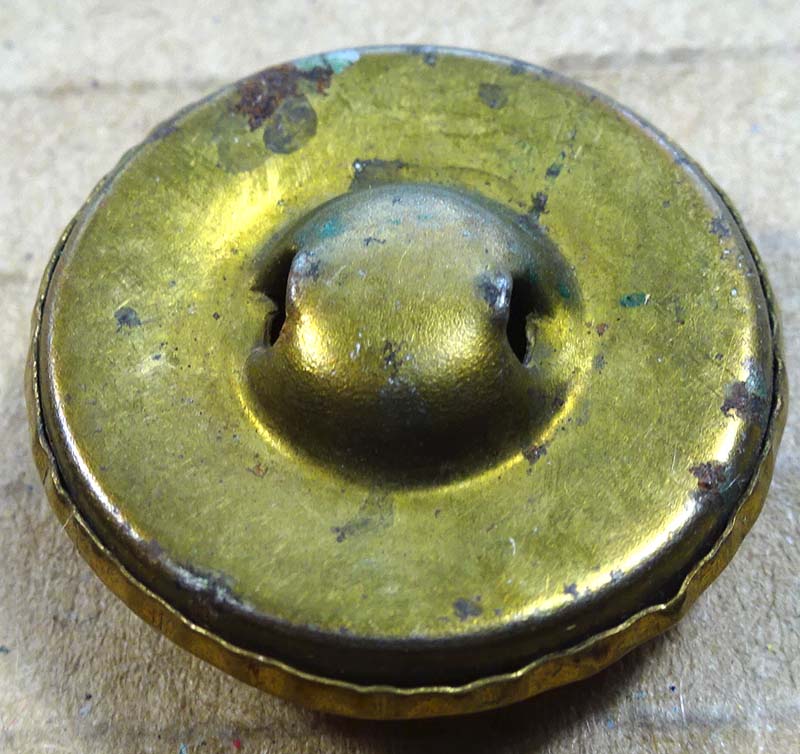Glossary
Below are a few of the terms you will often find in button descriptions. We aim to add to this list from time to time.
Austrian Tinies
These small metal buttons were made in Austria or thereabouts, in the late 19th and early 20th century. The top is usually flat and often combined with other materials such as pearl, celluloid, fabric etc. They have a metal domed or shallow domed back (usually painted black), metal loop shank, and a rim which folds over the back and holds it all together. Size must be 1/2” or less.
Those with pictures, bright colours, or unusual materials are more desirable but all are still relatively inexpensive. These are a favourite of our’s so Austrian Tinies have their own page at the top of the Shop menu.
Art Nouveau
Art Nouveau was a style popular from about 1890 up to around the start of the first World War.
This is the most feminine of Art styles. Motifs include flowers such as irises, anemones, and lilies; swans, peacocks, butterflies, and the female face and form often with flowing hair. Motifs are often surrounded or connected by flowing whiplash lines.
Buttons of this type are found in many materials, such as glass, silver and other metals. Some examples are shown on the right.
Ivoroid and Ivorine?
Both of these are celluloid, imitating ivory, usually late 19th or early 20th century. Ivoroid is pressed celluloid with a raised design, often buffed or dyed as in the castle and the shamrock on the right. Ivorine is a celluloid sheet with the design incised into the surface - as in the two flower buttons (far right). Can also be dyed and painted
Art Deco
The style of the Art Deco period followed the first World War and was popular in the 1920’s and 1930’s.
Gone are the flowing sinuous lines of the past. Lines are now stark, harsh, and geometric, the colours bold and bright - black and white, jazz orange, red, and chrome. Symbols of speed include planes, greyhounds, gazelles, racing cars and steering wheels.
Art Deco co-incided with the expansion of plastics - so buttons of this type are often found in the “new” materials, celluloid, casein, Bakelite and other plastics. You can search for “Art Deco” on the Home page, though this style mostly occurs in Plastics, as well as metal and glass.
Shanks
Shanks are important in helping to identify and date a button which is why we try and include a picture of the back of each one. Above are just some examples which help to date a button: U-shaped shank. four-way metal box shank, metal loop shank with small plate or collet, threadback, metal loop or wire shank, self shank, and hump shank.
